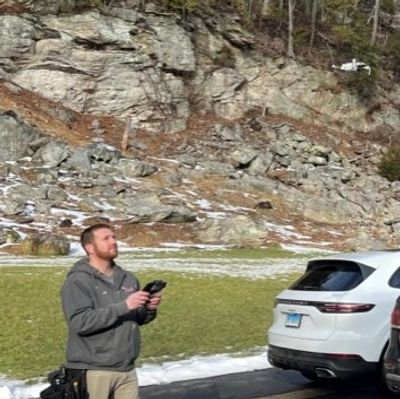Contact us today to schedule your detailed home inspection !
Drone Roof Inspections
The roof of your building can be easy to ignore - until suddenly it’s not. Roofs tend to bear the brunt of the elements, be it rain, hail, tree limbs, or heavy winds. The solution? Regular, thorough roof inspections conducted by our FAA Certified Drone Pilots using aerial photography.
While we prefer to walk on a roof to perform an inspection, sometimes it is not possible. Often, there are simply areas that cannot be accessed by people. Whether it’s an overhanging feature or a small recessed section, drones are more equipped to get up close and personal with any inaccessible areas. A roof may be too steep, slippery, or unstable to safely walk on. With drone inspections, an added benefit is that there is no risk to human life or potential damage to the roofing materials.
Drones have revolutionized the way property owners and contractors think about roof assessment. According to a 2018 survey of general contractors, about 57% said they used drones and that number is still going up for good reason. Rooftop aerial photography empowers you to make better, smarter, and more informed decisions.
A roof inspection can help:
- Determine the roof’s approximate age and overall condition.
- Identify missing and damaged shingles. Shingles may be missing, loose, curled, torn, broken, dented, folded, or creased.
- Locate penetrations caused by falling tree limbs or burrowing animals.
- Verify the condition of all roof protrusions such as ridge vents, chimneys, and vent pipes. These may be cracked, dented, damaged, or even missing.
- Determine the condition of flashing in valleys and around vent pipes and chimneys.
- Evaluate the condition of the gutter system, including clogs, dents, and damage.
- Observe the ponding of water on flat roofs.
Some reasons you may need a roof inspection include:
- Preemptive checks for current or prospective owners: Regular inspections can help you spot ongoing and potential issues so that you can make appropriate fixes.
- Warranty protection: Many warranty agreements require property owners to perform a roof inspection on a set basis for the warranty to remain in effect.
- Check for weathering: An inspection can help you to spot problem areas early and do course-corrective repairs before you need to foot a larger bill.
- Leak assessment: There’s nothing worse than a leaking roof. Simple as that.
- Drainage issues: Few roof-related problems can be as devastating as clogged drains. If left unchecked for extended periods, these can cause buildups of water that eventually begin to leak through the ceiling and cause damage property-wide. A roof inspection can spot pile-ups of leaves and debris in your gutters and help prevent an issue down the road.
- Maintenance damage: While you would always assume that the contractors you hire for other jobs, such as repairing chimneys and vents or clearing drains wouldn’t create new problems, this expectation doesn’t always match reality. If damage goes unreported — whether intentionally or simply because the contractor was unaware of an issue — it can cause major problems in the future.
- Solar panel installation: Adding solar panels to your property can provide you an in-house energy source. Your roof is a big part of the equation, as it will need to be sturdy, clean, sloped in the correct direction and large enough to carry enough solar panels to make the investment worth your while. A roof inspection can help clarify each of these points so you can make an informed decision.

FAA Certified Drone Pilot and Home Inspector Joe flying a drone to perform a roof inspection
Aerial Photo Gallery
License Number HOI0000794
Arthur Annecharico
AHIT Certified Home Inspector
Licence Number HOI0000794
Prime Home Inspecting
(860)707-3199